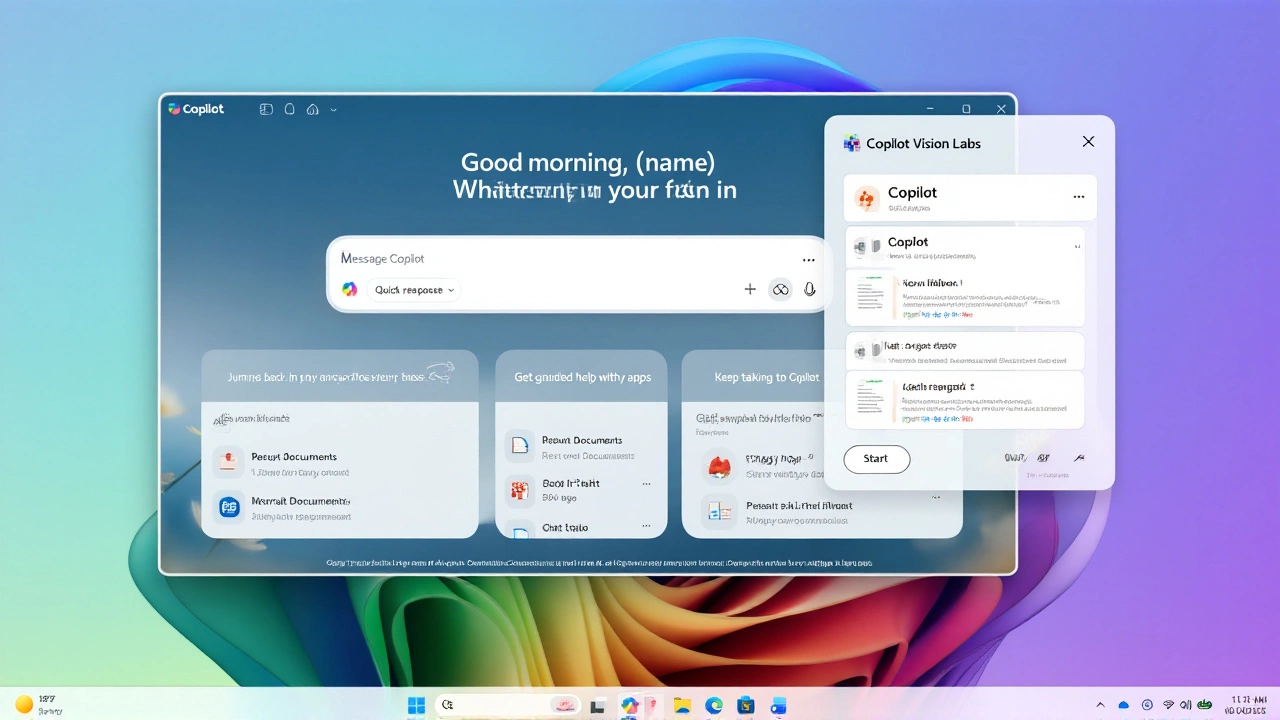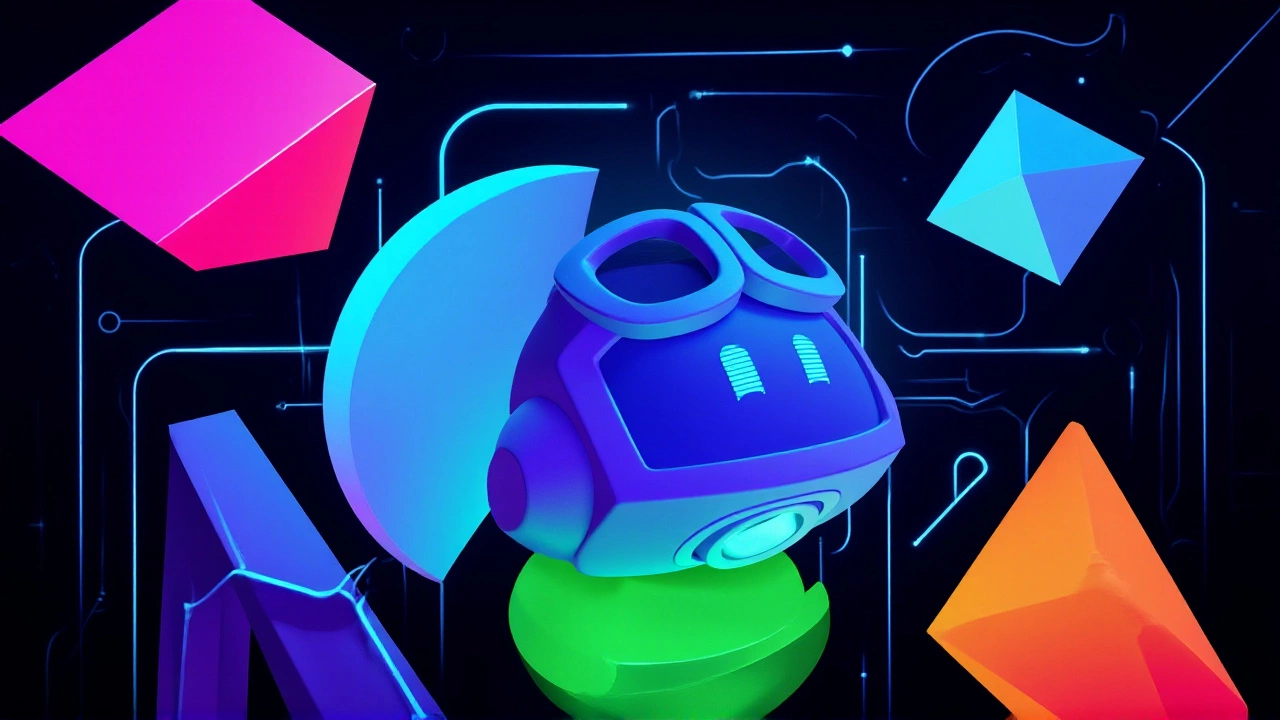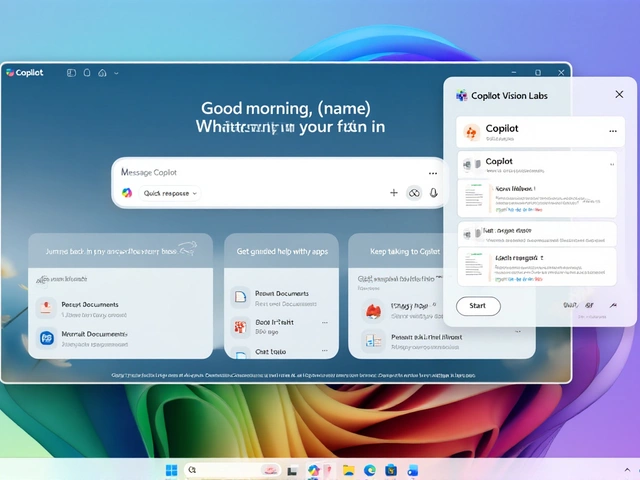Copilot Vision on Windows Now Supports Text Input for Windows Insiders

On October 28, 2025, Microsoft quietly flipped a switch that changed how millions of Windows users interact with AI — not with a splashy keynote, but with a subtle update in the Microsoft Store. Microsoft Copilot for Windows, version 1.25103.107 and higher, now lets Windows Insiders type questions to Copilot Vision and get text replies — no microphone required. It’s a small tweak, but one that opens the door for people who hate talking to their computers, work in quiet spaces, or simply forgot their headphones. The twist? Microsoft had spent the last year pushing Copilot as a voice-first tool. Now, it’s giving users a choice.
From Voice-Only to Text-Enabled: A Shift in Strategy
For months, Copilot Vision on Windows demanded you speak. Point your camera, say "Hey Copilot, what’s on my screen?" — and it would narrate your desktop like a hyper-competent tour guide. But that approach left out a lot of people. Office workers in open-plan cubicles. Parents in shared bedrooms. People with speech impairments. Those who just prefer typing. Microsoft knew this. Back on October 16, 2025, their Windows Experience Blog teased "Text-in Text-out: Coming soon," hinting they were listening. And now, it’s here.The mechanics are simple: Click the glasses icon in the Copilot composer, toggle off "Start with voice," and select the app or window you want analyzed. A soft, glowing outline appears around it — like a digital spotlight. Then you type: "Summarize this spreadsheet," "What’s in this photo?", or "How do I fix this error message?" Copilot replies in text, right there in the same chat window. Want to switch to voice mid-conversation? Just tap the mic button. Done? Press "Stop" or the "X." It’s intuitive, almost invisible — the way good software should be.
What’s Missing — And Why It Matters
But it’s not perfect. Microsoft openly admits: "Some functionality, like highlights that visually point out elements on the screen, is not supported with today’s release." That’s a big caveat. Those visual cues — arrows, boxes, animated pointers — were the secret sauce that made Copilot Vision feel like a real-time assistant standing over your shoulder. Without them, users are left to interpret text responses on their own. For complex tasks — like troubleshooting a cluttered dashboard or navigating a dense PowerPoint deck — that’s a step backward.
And yet, the trade-off makes sense. Microsoft is rolling this out gradually, starting with Windows Insiders across all channels. That means early adopters, testers, and power users are the first to feel the edges. Feedback is being collected directly inside the app — click your profile icon, select "Give feedback." This isn’t a finished product. It’s a prototype with legs. And Microsoft’s goal? To refine it before the wider Windows 11 rollout next year.

Why This Isn’t Just About Text — It’s About Inclusion
Behind the scenes, this update is part of a much larger push. Microsoft’s Ignite 2025 announcements highlighted "Voice in Microsoft 365 Copilot," now generally available for commercial users, allowing seamless switching between voice and text in Word, Excel, and PowerPoint. Meanwhile, the "Hey Copilot" voice activation feature — announced just days before this update — lets users summon AI with a simple phrase. Zoom integration for Copilot+ PCs lets you schedule meetings by hovering over an email address. The pattern is clear: Microsoft isn’t just adding AI features. It’s building a whole new layer of interaction.
But here’s the quiet win: accessibility. Microsoft’s own data, cited in their October 16 blog, showed users engage with Copilot twice as much when using voice. That’s powerful — but it’s also exclusionary. Not everyone can or wants to speak. Text input levels the field. It’s not a replacement for voice — it’s a companion. And in a world where AI tools often assume you’re able-bodied, neurotypical, and in a quiet room, this matters.

What’s Next? The Road to General Availability
Microsoft says the update is "gradually rolling out," meaning not every Insider has it yet. That’s by design. The company wants to catch bugs, tweak response accuracy, and see how often users toggle between voice and text. Expect the full feature set — including visual highlights — to arrive in early 2026. By then, the update could be pushed to all Windows 11 users with Copilot+ PCs, and possibly even older models via Windows Update.
Meanwhile, competitors are watching. Google’s Gemini and Apple’s Siri are still largely voice-driven. Meta’s AI assistants haven’t yet integrated deeply into desktop OSes. Microsoft is betting that flexibility — not just power — will define the next generation of AI assistants. And for users who’ve been waiting for an AI that doesn’t force them to talk to their screens? This is the quiet revolution they’ve been hoping for.
Frequently Asked Questions
How do I enable text input for Copilot Vision on my Windows PC?
First, ensure your Copilot app is updated to version 1.25103.107 or higher via the Microsoft Store. Open Copilot, click the glasses icon in the composer, then toggle off "Start with voice." You’ll now see a text box where you can type your questions. Select the window or app you want analyzed, and Copilot will respond in text. You can switch back to voice anytime by pressing the microphone button.
Why can’t I see visual highlights when using text input?
Microsoft confirmed visual highlights — like animated arrows pointing to UI elements — are not yet supported in the initial text-input release. This limitation is temporary and likely due to technical constraints in syncing real-time screen analysis with text-based responses. The company is actively testing this feature and expects to reintroduce it in a future update, possibly early 2026, based on Insider feedback.
Who benefits most from this text-based update?
People in noisy environments, those with speech disabilities, users without headphones, and anyone who prefers typing over speaking. Office workers, students in libraries, and caregivers in shared spaces now have a discreet, effective way to use AI. Microsoft’s own data shows voice use doubles engagement — but text input makes that engagement possible for people who couldn’t use voice at all.
Will this feature come to non-Insiders and older Windows devices?
Yes, but not immediately. Microsoft is testing the feature with Windows Insiders first, as part of its phased rollout strategy. If feedback is positive, the text-input capability will likely reach all Windows 11 users via a future update, possibly in early 2026. While Copilot+ PCs have optimized hardware for AI, Microsoft has indicated that core features like text-based Vision will be available on most modern Windows 11 machines, not just premium models.
How does this update fit into Microsoft’s broader AI strategy?
This is part of Microsoft’s "AI everywhere" push for Windows 11. Alongside "Hey Copilot" voice activation, Zoom integration via Click to Do, and voice-to-text in Microsoft 365, the company is building a unified AI layer that adapts to how you work — whether you’re speaking, typing, or switching between both. The goal isn’t to make AI louder, but smarter and more adaptable to human behavior.
What should I do if the text input feature doesn’t appear on my device?
Microsoft is rolling this out gradually, so it may take days or even weeks to reach your device. Check for updates in the Microsoft Store, ensure you’re enrolled in any Insider Channel, and restart your PC. If it still doesn’t appear, use the "Give feedback" option in Copilot to report it — your input helps prioritize the rollout. Don’t assume it’s broken; it’s likely just waiting in the queue.

